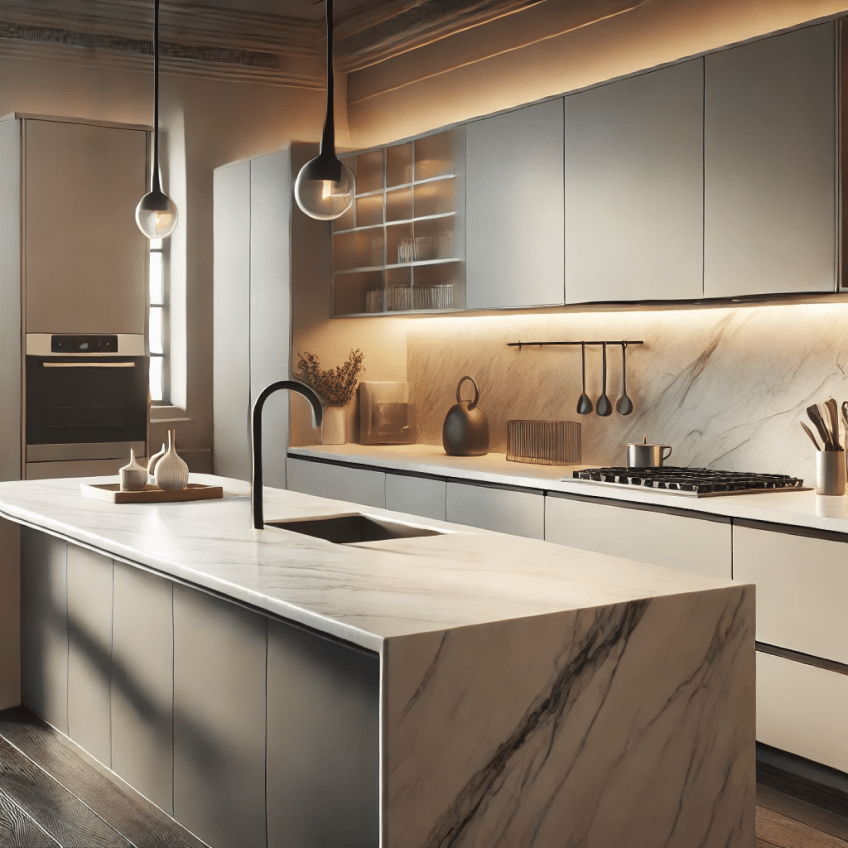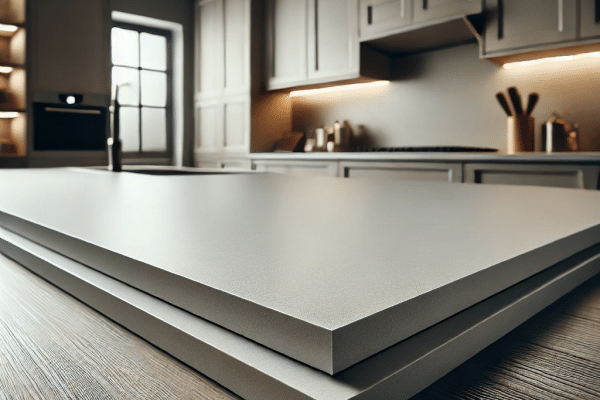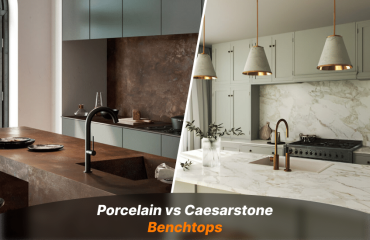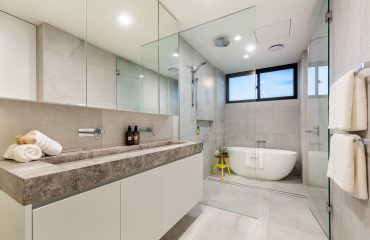When designing the perfect kitchen, the benchtop is a key element that combines style and functionality. For a balance of aesthetic appeal and practical use, porcelain benchtops are increasingly popular among kitchen designers. Known for their sleek appearance, durability, and low-maintenance nature, porcelain benchtops offer a timeless quality that complements modern kitchens. In this article, we’ll explore why porcelain kitchen benchtops are a top choice for designer kitchens, covering cost factors, pros and cons, installation tips, and maintenance essentials. Whether you’re working with kitchen designers in Melbourne or tackling a DIY renovation, porcelain is well worth considering.
Factors That Influence Porcelain Benchtop Costs
Porcelain benchtops are an investment, and understanding the cost factors can help you budget wisely. Here’s a look at the main aspects that impact the price:
- Material Thickness: Thicker porcelain slabs are pricier due to the increased amount of material and the skilled labour required for installation.
- Kitchen Size: Larger kitchens require more porcelain, which not only adds to the material costs but also raises installation expenses.
- Installation Complexity: Custom designs, such as unique shapes or edge profiles, demand precision and expertise, impacting labour costs.
- Location and Supply Chain: Where you live can influence sourcing costs due to shipping or supply chain challenges. For instance, kitchen designers in Melbourne may have specific sourcing options that affect the price.
Considering these factors early in your planning helps ensure you’re prepared for the full scope of a porcelain benchtop project.
Advantages and Drawbacks of Porcelain Benchtops
When choosing a benchtop material, it’s essential to weigh both the advantages and potential drawbacks.
Advantages:
- Durability: Porcelain benchtops are incredibly durable, resistant to heat, stains, and scratches, making them ideal for high-traffic kitchens.
- Aesthetic Appeal: Porcelain can mimic the look of natural stones like marble or granite, providing a high-end look without the upkeep.
- Low Maintenance:Non-porous and stain-resistant, porcelain is easy to clean and doesn’t require sealing.
- Lightweight: Porcelain is lighter than many other stones, simplifying the installation process and reducing labour costs.
Drawbacks:
- Price: Porcelain benchtops are more expensive than materials like laminate or engineered stone, but they provide long-term value due to their longevity.
- Limited Edge Designs: While there are numerous surface finish options, edge profiles are more limited compared to natural stone.
- Chipping: Although tough, porcelain can chip upon severe impact, especially along the edges.
Professional Vs DIY Installation
While some may consider a DIY installation to save on costs, porcelain is a specialised material that requires professional handling. Mistakes in cutting or aligning can lead to costly issues. Professional porcelain benchtop installation ensures a smooth, durable result and provides peace of mind that the job is done right.
The Process of Installing a Porcelain Benchtop
Generally, the process of installing a porcelain benchtop involves a couple of key steps to achieve an flawless result.
1. Consultation and Quote:
Consult with kitchen designers or contractors specialising in porcelain benchtops. They will measure your kitchen space, discuss design preferences, and provide a quote that factors in your chosen materials, finishes, and any custom requirements.
2. Material Selection:
Next, select the style, colour, finish, and pattern of your porcelain benchtop. Many homeowners choose porcelain for its versatility, as it can imitate natural stone or offer a sleek, modern finish, allowing it to suit a wide range of kitchen styles.
3. Preparation of the Space:
Before installation begins, the old benchtop needs to be removed, and the area cleared. This step may involve temporarily disconnecting plumbing or appliances, ensuring that the space is ready for the new benchtop without any obstacles.
4. Cutting and Fitting:
The porcelain slab is then carefully cut to match your kitchen’s specifications, including precise cutouts for sinks, stovetops, and any other features. Since porcelain is a hard, brittle material, this stage requires experienced professionals to prevent chipping or cracking.
5. Installation and Finishing Touches:
Finally, the cut porcelain slab is positioned, levelled, and securely fastened. Any seams are sealed, and finishing touches, like edge profiles, are completed to ensure a flawless appearance.
Maintenance Tips for Porcelain Benchtops
To keep your porcelain benchtop looking new:
- Daily Cleaning: Use a soft cloth with mild soap and water; avoid harsh chemicals.
- Prevent Heavy Impact: While durable, porcelain edges can chip, so avoid dropping heavy items on them.
- Heat Protection: Use trivets or heat mats for hot pots and pans to maintain the surface’s integrity.
- Regular Inspections: Check occasionally for chips or cracks, especially if the kitchen sees heavy use, and arrange repairs as needed.
Conclusion: A Worthwhile Investment in Kitchen Design
Porcelain benchtops offer a compelling blend of beauty, durability, and functionality, making them an excellent choice for any designer kitchen. Although the initial investment may be higher than other materials, the benefits of low maintenance, resilience, and timeless appeal make porcelain a wise long-term option. Whether you’re consulting with kitchen designers in Melbourne or undertaking a renovation yourself, a porcelain kitchen benchtop could be the perfect final touch for a stylish and functional kitchen.







